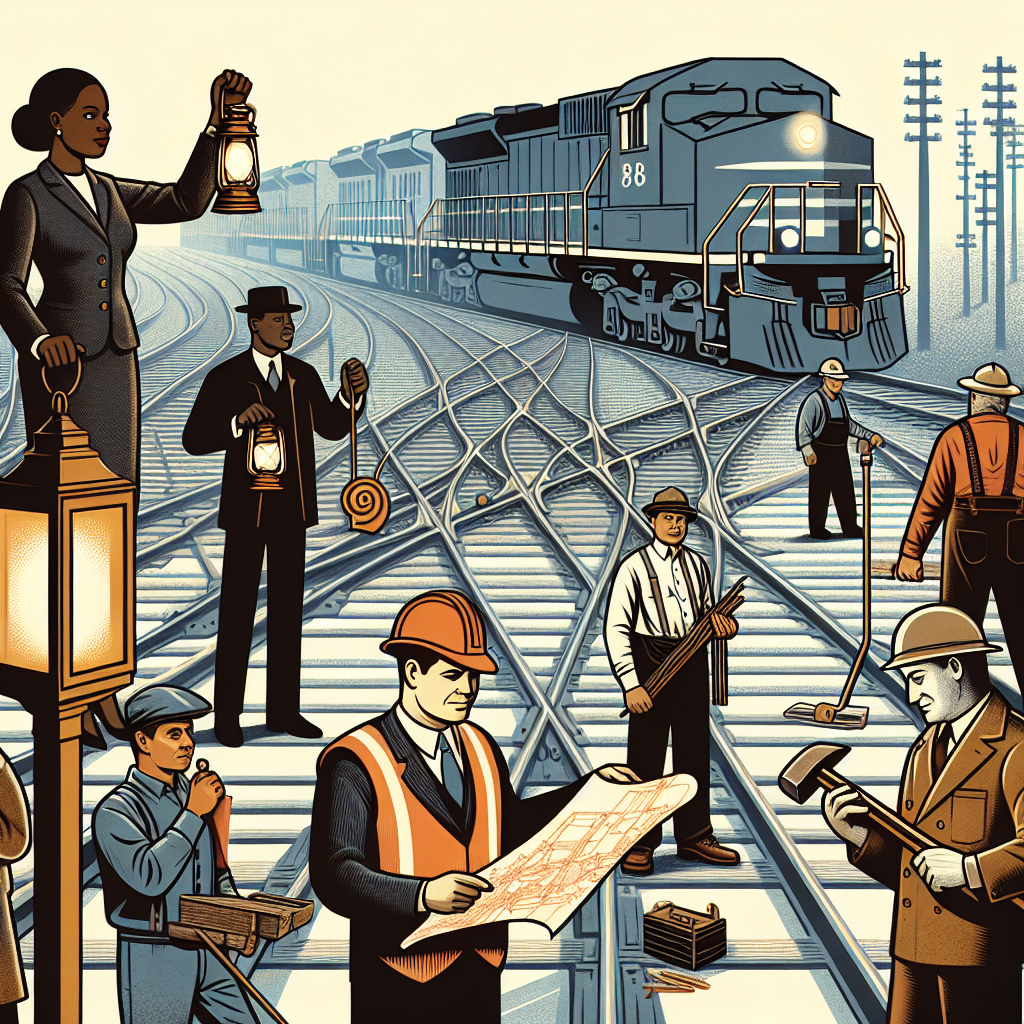Railroads remain a backbone of freight and passenger movement in many countries, offering a wide range of stable career paths. Top Insights on Railroad Transportation Jobs examines the roles, required skills, and realistic expectations for anyone considering the rail industry—whether you want to be on the locomotive, working in maintenance, managing operations, or supporting logistics from an office.
Key insights into railroad transportation careers
The rail sector blends blue-collar and white-collar opportunities. Common on-track occupations include locomotive engineers, conductors, signal maintainers, and track workers, while rail yards and corporate functions need dispatchers, logistics planners, safety managers, and mechanical technicians. Each role demands a mix of technical training, safety awareness, and teamwork.
Typical job categories and what they do
Understanding the broad job categories helps job-seekers target the right training and entry points:
- Operations: Locomotive engineers and conductors who operate trains and manage on-board procedures.
- Maintenance: Track workers, signal and communications technicians, and equipment mechanics who keep infrastructure and rolling stock safe.
- Yard and terminal roles: Yardmasters and switch operators who coordinate railcar placement and transfers.
- Support and planning: Dispatchers, logistics specialists, and safety/compliance officers who ensure efficient and lawful operations.
Skills employers value
Rail employers typically look for a blend of hard and soft skills. Technical proficiency—such as the ability to read track diagrams, interpret signals, or perform mechanical repairs—is essential for many roles. Safety-focused thinking, situational awareness, and clear communication are critical across positions. Employers also value certifications, hands-on apprenticeships, and demonstrated experience with safety protocols.
Pay, outlook, and reliable sources
Wages vary by role, region, and seniority. Many rail jobs offer competitive pay, union protections, and strong benefits compared with other transportation sectors. For data on employment outlook, wages, and typical duties for specific railroad occupations, consult the authoritative government labor resources such as the Bureau of Labor Statistics overview of locomotive engineers and railroad workers.
Training paths and certifications
Entry routes include vocational programs, apprenticeship schemes, community college courses, and employer-sponsored training. Specific positions may require certifications in safety and equipment operation, a commercial driver’s license (for certain ground equipment), or FRA-mandated training in the United States. On-the-job training and incremental promotion are common—many professionals begin in yard or maintenance roles and advance into operational or supervisory positions.
How to find openings and build experience
Start with industry-focused job boards, company career pages, and unions. Internships and apprenticeships offer practical exposure and frequently lead to permanent roles. For college students and recent graduates exploring entry-level opportunities across transportation and logistics, this ultimate guide to job boards for college students in the USA — free and paid options helps identify where to look and how to tailor applications for rail and related sectors.
Practical tips for applicants
- Highlight safety training and any hands-on experience with vehicles, heavy equipment, or mechanical systems.
- Obtain relevant certifications early—rail employers often prioritize applicants with clear safety qualifications.
- Use targeted resumes for operational vs. office roles; emphasize technical skills for maintenance jobs and planning/communication skills for logistics roles.
- Network with local unions, vocational schools, and rail industry events to learn about apprenticeships and openings.
Work environment and lifestyle considerations
Many rail jobs involve nonstandard schedules, including nights, weekends, and extended shifts. Freight roles often require travel and time away from home, while yard and maintenance positions may be more localized. Evaluate schedule expectations and physical demands before committing to a training program or a full-time role.
Rail career outlook and planning
Long-term prospects in the rail sector are shaped by freight patterns, infrastructure investment, and passenger rail initiatives. Those willing to gain technical skills and safety credentials tend to have the most mobility and job security. Strategic planning—combining training, certifications, and early on-the-job experience—gives applicants a competitive edge.
FAQ
Q: What entry-level rail job is best for beginners?
A: Yard or maintenance assistant roles and conductor trainees often serve as common entry points because they offer structured on-the-job training and clear promotion pathways.
Q: Do rail jobs require college degrees?
A: Many operational and maintenance jobs do not require a four-year degree; vocational training, apprenticeships, and certifications are frequently more important. Office and planning roles may prefer postsecondary education depending on responsibilities.
Q: How can I improve my chances of hiring?
A: Gain relevant certifications, complete apprenticeship or training programs, emphasize safety and teamwork on your resume, and network with industry professionals and unions.



